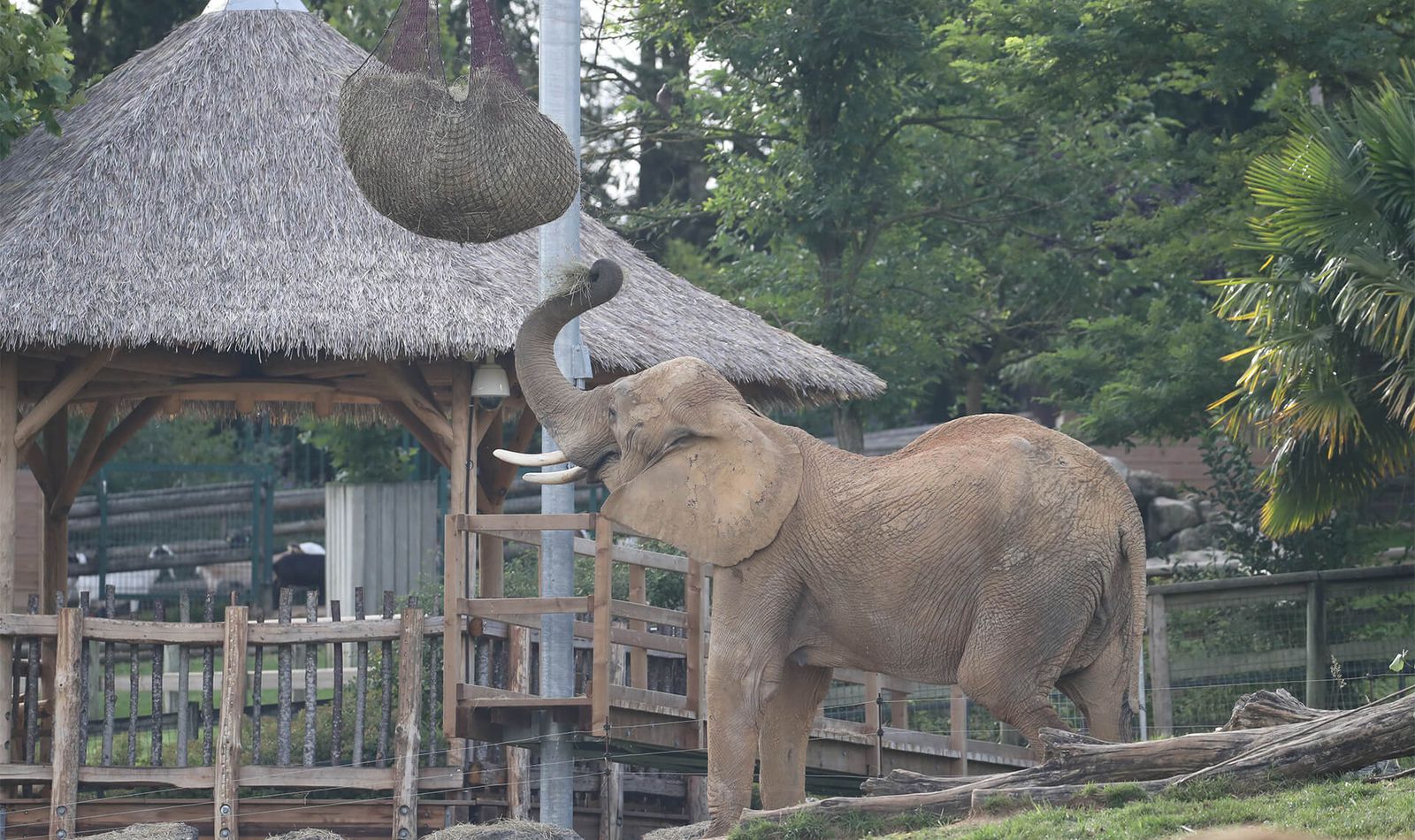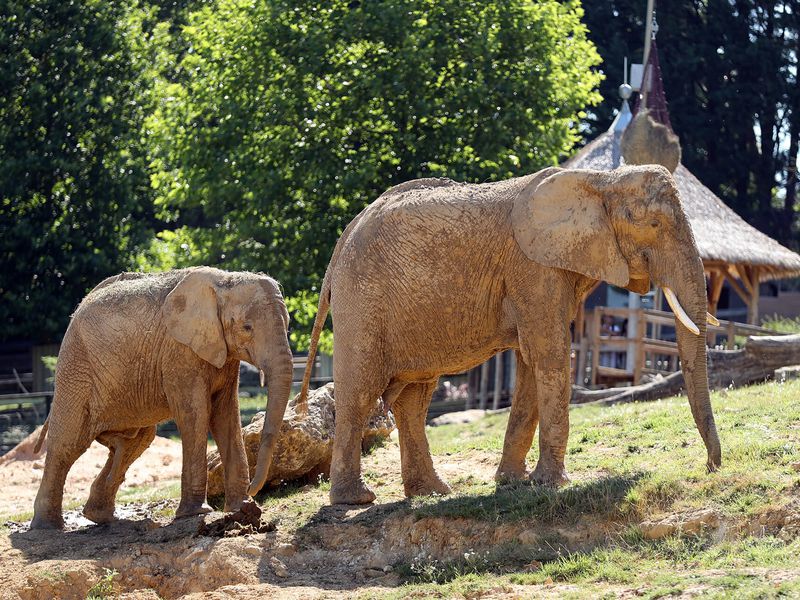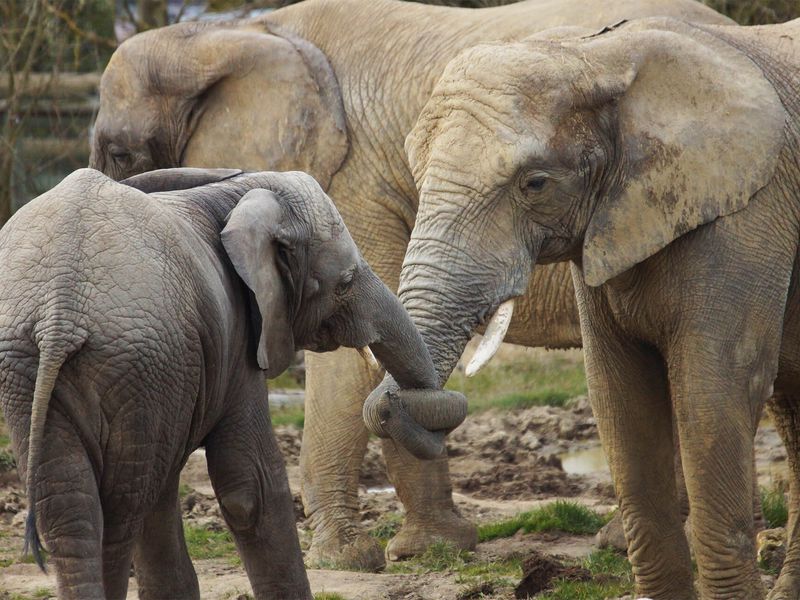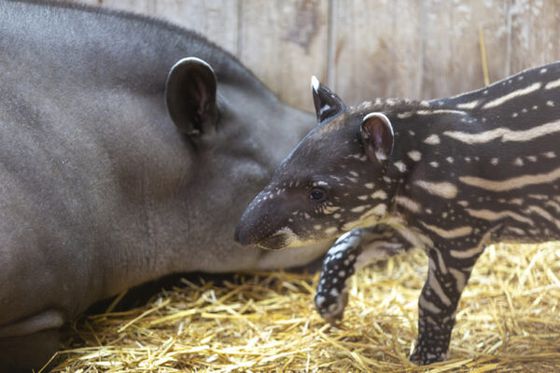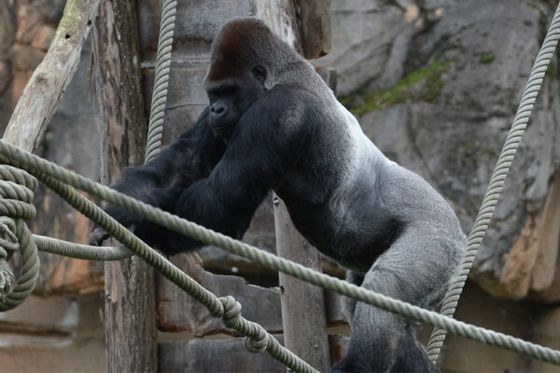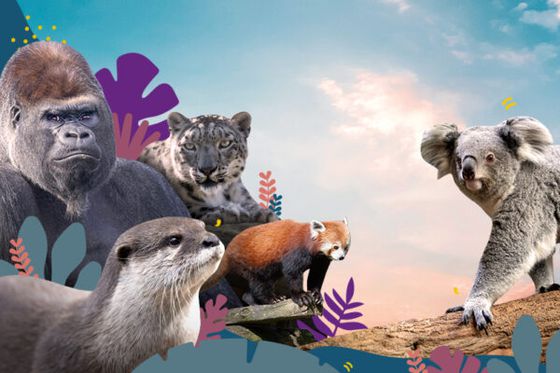« It’s not just the elephant’s weight and size that are record-breaking. »
The largest land mammal
The heavyweight champion!
The African savanna elephant can weigh more than 7 tonnes and reach up to 4 metres in height. The only animals that can compete with it for the title of heaviest animal are cetaceans, such as the blue whale… No other land mammal measures up. Huge amounts of food are needed to feed these giants! Every day at Beauval, each individual ingests 100 to 150 kg of plant material (fruits, leaves, branches, etc.), as well as around one hundred litres of water. These meals can most certainly be described as elephantine!
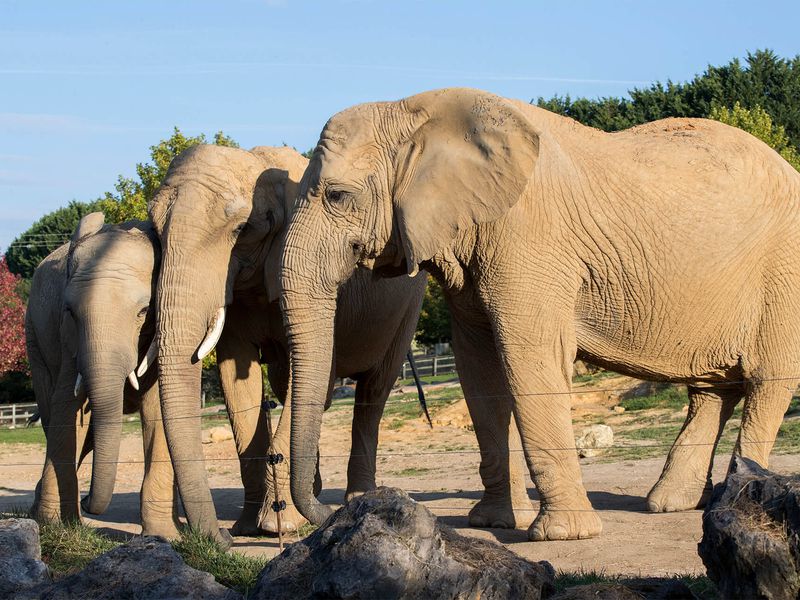
Did you know?
Rungwe sets off for new adventures…
Rungwe, our 6-year-old elephant, is leaving Beauval for his new home at Magdeburg Zoo in Germany. Take a look back at his birth and his life at the ZooParc.
Beauval Nature helps fight against elephant poaching in Kenya
The Rombo Group Ranch in southern Kenya is home to some landscapes that are still untouched. It is a prime area for the conservation of many endangered species, such as the elephant. However, elephants still fall prey to ivory poachers and illegal hunting.
The Beauval Nature association supports the Big Life foundation which has initiated, amongst other things, an ambitious project to monitor and fight against poaching within the ranch. As part of this project, more than 250 rangers were recruited from the local population to carry out daily patrols and mobile surveillance within the ranch.
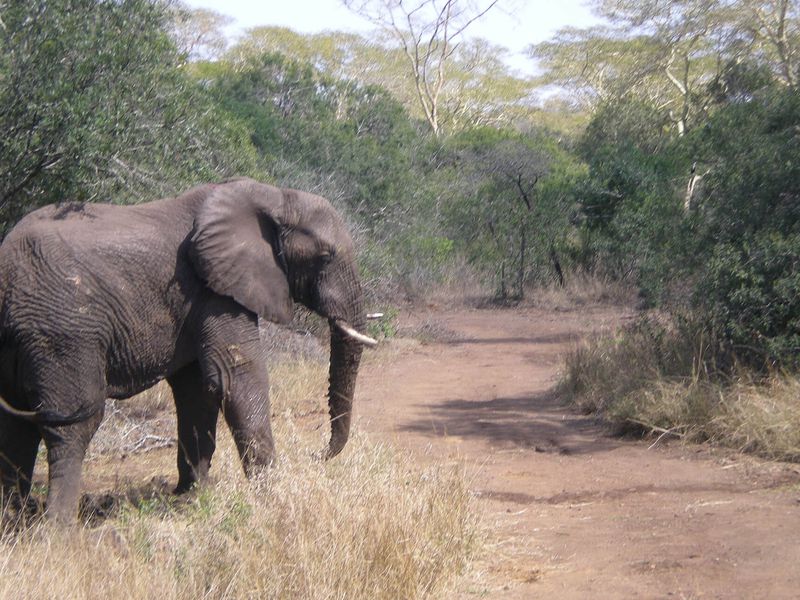


Sponsor our elephants
Establish a strong bond with your favourite animal whilst supporting conservation programmes through the Beauval Nature association!
Endangered
Learn more about the species
-
HerbivoreDiet
-
22 monthsGestation period
-
1 youngLitter size
-
Forests, SavannahsHabitat
The difference between Asian elephants and African elephants
Yet another record
Why the big ears?

Take full advantage of the experience thanks to our mobile application!
Find out more
